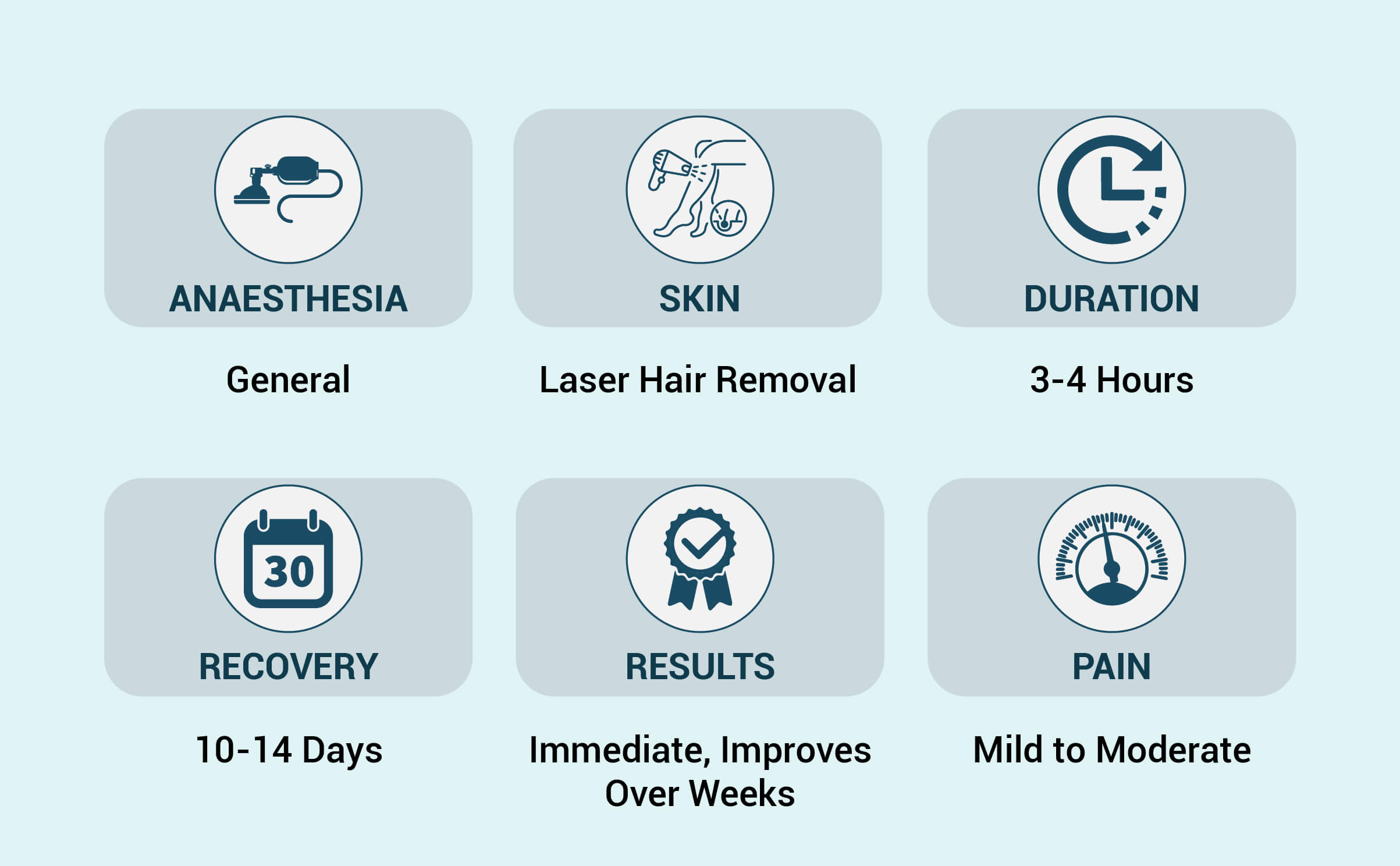Get Laser Hair Removal Treatment in Bandra, Mumbai
What is Laser Hair Removal?
Laser Hair Removal, also known as Plastic Surgery for Hair Removal, is a method of getting rid of unwanted hair by using laser light to destroy the hair follicle. The goal is to achieve a long-term reduction in hair growth.
However, it's important to understand that the term "permanent" hair reduction means a stable decrease in the number of hairs regrowing after treatment. Some patients may experience complete regrowth of hair in the treated areas over time.
This means that while laser treatments can permanently reduce the overall amount of body hair, they may not completely remove all hair permanently.

Who should seek?

Individuals are tired of shaving, plucking, or waxing or getting razor bumps or acne-like breakouts. If so, one should consider laser hair removal.
Plastic Surgeons use lasers to remove unwanted facial and body hair safely and effectively. Hair grows in several phases, and a laser can only affect the currently active growing hair follicles (early anagen). Hence, several sessions are needed to damage the hair in all phases of growth and force it to revert back to a vellus non-colored small hair.
Afterward, most patients are free of unwanted hair for several months. When the hair regrows, most patients see noticeably less hair than before. The hair also tends to be finer and lighter in color. Laser hair removal can be repeated when the hair regrows.
The lasers designed for hair removal can be used on most parts of the body. Many lasers effectively treat large areas.
How Permanent Laser Hair Removal Works
Permanent laser hair removal is a popular method for reducing or eliminating unwanted body hair. It uses concentrated beams of light from a laser to target and damage hair follicles. The pigment in the follicles absorbs the laser energy, turning it into heat and damaging them. This prevents or delays future hair growth.
Here's how it typically works:
Consultation:You'll meet with a professional to assess your skin type, hair color, and medical history to determine your suitability.
Preparation:On the treatment day, the treated area will be cleaned, and excess hair may be trimmed or shaved to ensure the laser energy is absorbed effectively.
Protection:Both you and the technician will wear protective eyewear during the procedure.
Application of numbing cream or cooling gel:This may be applied to minimize any discomfort.
Laser treatment:The technician will use a handheld laser device to pass over the treatment area. The laser targets the hair follicles' pigment, damaging them while leaving the surrounding skin unharmed.
Post-treatment care:You may experience temporary redness, swelling, or mild discomfort. The technician may apply a soothing cream or give you instructions for aftercare.
Multiple sessions:Since hair grows in cycles, several treatment sessions are usually needed. These sessions are spaced weeks apart to target hair follicles during their active growth phase.
Long-term results:With each session, more hair follicles are damaged, reducing hair growth. While laser hair removal provides long-lasting results, complete permanent hair removal isn't guaranteed. Some people may require maintenance sessions for any regrowth.
Remember to consult with a professional or dermatologist to understand the potential risks, benefits, and expected outcomes of laser hair removal for your specific situation.
Laser hair removal can treat the following:
Back
Bikini area
Chest
Face, especially the upper lip and chin
Neck
Shoulders
Side Effects of Laser Hair Removal
Some normal side effects may occur after laser hair removal treatments, including itching, pink, redness, and swelling around the treatment area or swelling of the follicles (follicular edema). These side effects rarely last more than two or three days. The two most common serious side effects are acne and discoloration. Some level of pain should also be expected during treatments.
How Many Treatments for Permanent Laser Hair Removal
Typically, a series of 6 to 8 treatments is recommended for optimal results. However, it's important to note that this number is just an estimate and can vary for each person. Some individuals may require fewer sessions, while others may need additional treatments to achieve their desired outcome.
 WhatsApp
WhatsApp